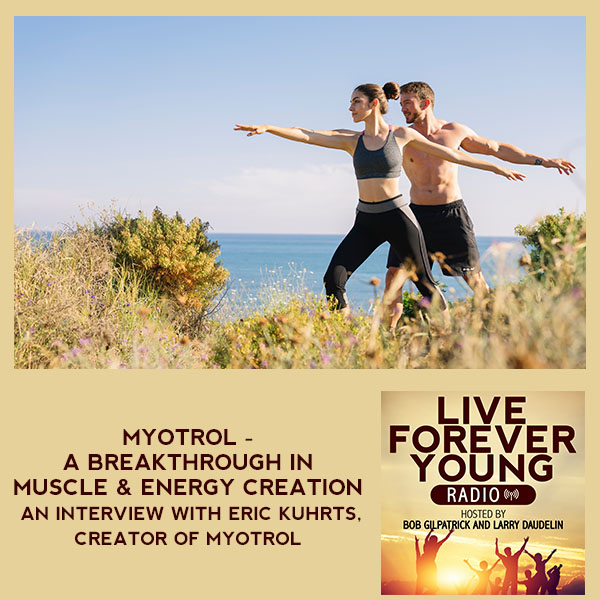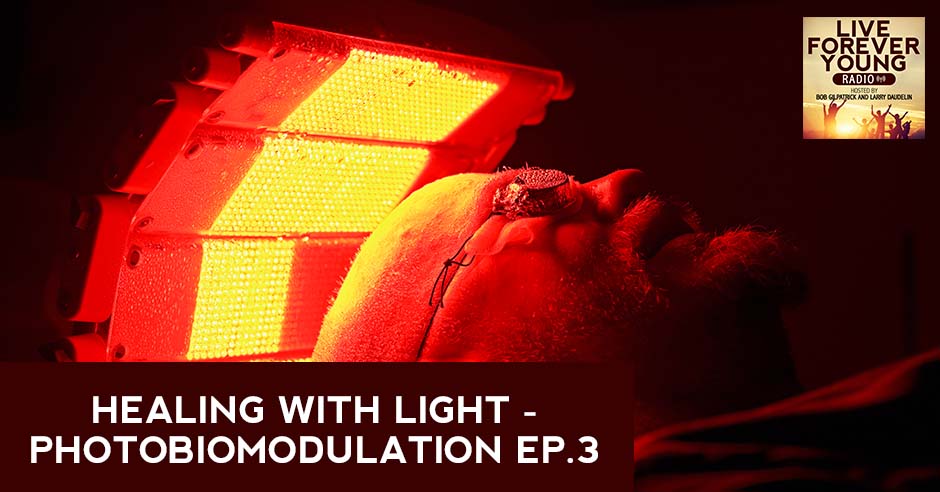
Welcome to Live Forever Young Radio. Today we are back with Peter Forhan, a PBM expert. In the last show, we heard all about the amazing new technologies Peter and his company, JustLight, have been developing. If you haven’t seen it, be sure to go back and check it out. In our last of three episodes, Peter explains how to build an inexpensive indoor light bath so you can get all of the benefits of light therapy in your own home. He also reveals more secrets of the emerging technology of photobiomodulation light therapy. So sit back, relax, and get ready to live forever young.
—
Watch the Podcast Here:
Listen to the podcast here
Healing With Light – Photobiomodulation Ep. 3
Featuring Peter Forhan Of JustLight.com
We are back with Peter Forhan, photobiomodulation expert. On the last episode, we heard all about the amazing new technologies Peter and his company, JustLight, have been developing. If you haven’t read it, be sure to go back and check it out. On our last of three episodes, Peter is going to explain how to build an inexpensive indoor light bath so you can get all the benefits of light therapy in your own home. He even reveals more secrets of the emerging technology of photobiomodulation light therapy. Sit back, relax, and get ready to live forever young.
—
Now what we can do in our homes, and for the people that aren’t living at the equator or environments with lots of sun, there is still good news. We can build our own light baths for even just a couple of hundred dollars, and start accessing the benefits every day as long as you live. Every morning, if I don’t have the ability to take a natural sunbath outside, I step into my small light bath chamber, which is actually a grow tent from Amazon, Mylar-lined closet, that’s big enough for me to sit and meditate within.
I turn on my bright white LED panel and my red light therapy bulb, Sunflower in my case, and I sit in this bright white light and this warm infrared light. I’m basically mimicking what the sun is doing every morning. If I can get the sun naturally, I’ll do that. If I can’t or if it’s winter, I’ll sit in my light bath. We have resources of how you can build a light bath in your own home by buying a grow tent. It’s an inexpensive but high-quality way of creating the actual form and structure, and the lights that go inside of it so that you can start taking light baths in the comfort of your own home, and they feel amazing.
An infrared sauna is a lot like a light bath. This is an invisible longer wavelength infrared light, which has benefits but not the same specific gene-signaling benefits and other benefits of red and near-infrared light, but holistically a very similar process. For those that sit in an infrared sauna, you know how wonderful it can feel. You’re getting a little bit of a sweat going, and the mood boost that comes with it.
We are building on the vision of Niels Finsen, who in early 1900s fully believed there would be a light bath in every home. We completely agree, Niels Finsen, there should be a light bath on every home for the same reason there should be a faucet in every home. We simply have to absorb light every day as a physiological requirement. If we don’t, we have predictable and consistent degenerative disease develop.
Another question I had was in regard to your eyes. We have seen the research that talks about how photons are converted into electrons in the cones and rods in your eyes, and the importance of DHA, a fatty acid, which you can get through fish oil and krill oil and the like. Can you tell us what you’d like to have the audience here in regard to that phenomenon?
The eyes are extremely interesting in the case of light. One of the things that we say is that there’s more to light than meets the eye. Our eyes take the signal of our environment of the colors of exposure, and they use that to inform lots of our hormonal balance. Most specifically the pineal gland, the master of hormone gland. If we aren’t seeing physically with our eyes, certain wavelengths of light, mainly UVA light or blue light at the middle of the day, then our body will go into dysregulated mode.
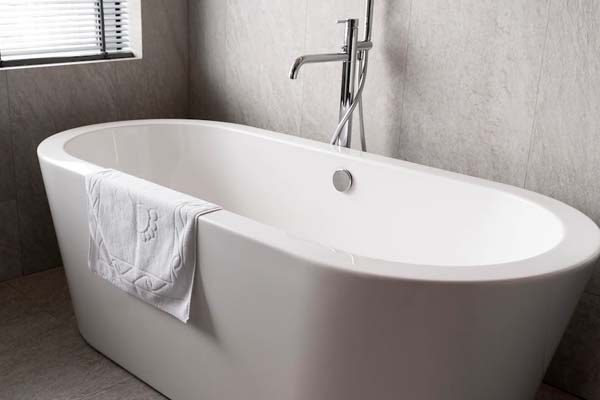
Photobiomodulation: We can build our own light baths for even a couple of hundred dollars and start accessing the benefits daily.
When we wake up every day, if you can have the capacity and time and ability to wake up and watch the sunrise, there’s a very specific blend of light that is coming from the sunrise that you can stare directly at the sun and take these collimated or laser-like rays of the sun directly through your pupils, directly into your pineal gland. There’s even a practice that’s actually becoming more popular now called sun gazing, that is directly staring at the sun in the areas of the morning and sunset where you can directly get this light into your eyes.
What’s really incredible with the eyes is there’s so much information in the light that we have that is limited in an artificial light environment. When we’re sitting indoors all day, we’re getting an output of light that’s produced by a fluorescent lamp or LED light above us. That is not the same blend of light that would be happening with sunlight exposure. While that might not, at first glance, seem to be a big deal, it’s a really big deal for a body that’s evolved for millions and millions of years to use the information of our environment, to tell us what season it is, to tell us what time of the day it is, to tell us if resources are plenty or if resources are scarce.
What we find is that if somebody doesn’t receive proper bright white light in the morning, or waking up viewing the sun, then the body goes into this dysfunctional hormonal mode of having low serotonin release in the body and low melatonin. This is governed by the eyes, which is cool. When our eyes in the morning see sunlight, we signal for the release of serotonin, the hormone that makes us feel energized, happy, “Things are good. It’s summer. We don’t need to hibernate.” We have a positive mood. In the presence of darkness, the hormone serotonin is converted to the hormone melatonin, which of course we know is the hormone that makes you feel tired and leads to restorative sleep and other very important functions.
If you don’t have proper serotonin, you’re not going to have proper melatonin. You’re going to have low, lethargic tired days. Then when you finally lay down and go to sleep, you’re going to have mild, not very restorative sleep and you’re like, “I was tired all day. Why is it taking me more than five minutes to fall asleep like a healthy human being should?” What happens is this is a very dangerous cycle, melatonin imbalanced, serotonin imbalanced, serotonin imbalanced, melatonin imbalance. We’ll prescribe things like SSRIs or melatonin pills, or try to make hacks for how to apply this.
These are light regulated processes. Our body regulates these hormones via light exposure through the eyes. Viewing bright white light in your climate is very important. If you’re living in a climate that has dark, dreary winters or dark, dreary cloudy days, that’s okay because we have the technology now to deliver this in the comfort of your own home. We no longer need to go into hibernation mode between October and March. We can stay as a happy, functional human being even if we’re living in Sweden or in Northern Michigan by taking advantage of the technology that leads these signals to us now. The signals of the eyes are incredibly interesting.
In the future, do you see developing a technology that would allow people to experience the sunrise or the sunset in their own home?
There's more to light than meets the eye. Our eyes take the signal of our environment and the colors of exposure and use that to inform our hormonal balance. Share on XI’m glad you asked. Our Sunflower that we’re releasing in Q1 of 2023 will include the white light blend to do that SAD light therapy or sunrise simulation. Sunflower has the capacity to replicate what I described, so you don’t need a separate bright white therapy device. Our red light therapy photobiomodulation device will also include it.
People that may be inclined to do sun staring or sun gazing early in the morning could later in the morning experience that and have the benefits of a sun gazer, but not have to get up at the crack of dawn to do it?
Yes. I will say that, no matter how good we become as scientists, there will always be an innate benefit to the sun itself versus the LEDs we can produce, but I’m not letting the enemy of perfection be good or whatever the saying is. In the meantime, yes, LEDs are a great stand-in if we don’t have the time or accessibility to watch the sunrise and sunset.
Could you tell us a little bit more about photons? Photons appear seemingly out of nowhere when quantum leaps occur and this and that. Can you tell us in a way that all of us can understand what a photon is, where it comes from, how it manifests, and how it generally gets made into light? The sun looks like light. Is the sun sending us photons? If so, when do they convert to electrons and all like that?
A photon, most simply for this explanation, is a particle of light. I’m going to be general, atoms being particles of matter, so the stuff making us up, and photons being a particle of light. A bit smaller but interacting in a very important way. As atoms absorb photons, one of two things happen. That photon goes right through the atom, and there’s no interaction at all, or that atom absorbs the photon, and the electron cloud jumps to a higher energy state. That’s the trapping of this energy. When I say that water traps photons and creates electricity, it is the atoms in their specific arrangement trapping photons, and their electron clouds jumping up a quantum level and this discreet jump.
What’s really interesting about this topic is that happens in two ways. As an atom with the electron cloud out here, the atom reduces in its quantum state and then releases a photon. When something is giving off light, it’s also an electrical process of the electricity of the atom going to a lower state. When something is absorbing photons or absorbing particles of light, it’s jumping to a higher electrical state.
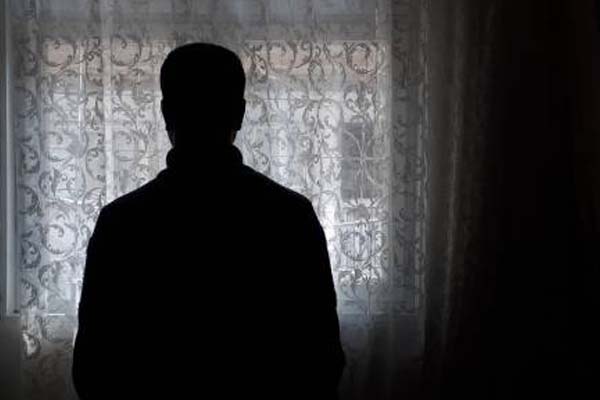
Photobiomodulation: If somebody doesn’t receive proper bright white light in the morning or wakes up viewing the sun, the body goes into this dysfunctional hormonal mode of having low serotonin release.
In the case of the sun, it’s a little bit different because the sun is having a nuclear fusion process of things being torn apart, and the photons within the nucleus is being released and showered every which way. We generally, besides the sun in our day-to-day life, aren’t interacting so much with the nuclear fusion side of things, but we’re more so interacting with reflection, refraction and absorption.
When I take a flashlight and point it at myself, some amount of light is absorbed by my skin, by my bone, by my brain. Some amount of light is reflected off my body. We see and interact in our world all the light that’s reflected off the things around us. When I look out the window, I’m seeing green leaves and brown buildings and a gray road because those wavelengths of photons are bouncing off those objects and being reflected into my eyes.
My eyes are then taking those wavelengths of photons that are meaningless outside of the human brain, converting them to very specific electrical signals, and then creating an image of which I now see looking around me. We create the meaning from all of these unique wavelengths of photons that are constantly showering ourselves in our body. We have a freeze frame view of these waves and waves of light energy, both visible and invisible, constantly bathing our eyes, that we’re able to organize it and make sense of it.
As we look around, we’re seeing vast swabs of energy reflecting off of matter, and that we just see it as a room or as outside or as an environment, but that’s not the only thing that’s happening. Lights reflecting off of those pieces, but a lot of the light is being absorbed. If you’ve ever stood on hot black pavement in the sun, black materials are black because they’re not giving off light. They are absorbing light and only giving up a very small amount and equal quantities.
If some things like my shirt is reflecting all light, we see it as white. Photons that are blue, green, yellow, red in equal magnitudes, an equal amount of photons of those colors, we see that as white color. There is no white photon. It’s just a blend of these other colors. As we deal with materials like black materials, they absorb the light, and in many cases convert it to heat. Black pavement is a lot hotter than white pavement because that black color means that it’s trapping the light and not reflecting it off. Instead, that light is being converted to another form of energy.
It always has to be converted to another form of energy, as we know from just the conservation of energy. Something is either absorbing, reflecting it, or it’s passing directly through. All the time right now, we’ve got massive radio waves, microwave, everything in our environment passing through us, we’re absorbing fractions of the massive electromagnetic bath that we are bathed in, and we’re reflecting portions of it too with what you see as my appearance, my clothing, and everything else coming off as well. All of that reduced down are tiny particles of light or ways of light that can be viewed as one and the same interacting with our eyes, and us using that information to generate an image that we then see as our waking vision.
Water is photoelectric. Therefore, living cells are photosynthetic. We urgently need to apply this understanding to our healthcare system. Share on XThank you very much for that. Peter, can you tell for the people that are reading, how do they get to you? Your website is JustLight.com. When they get there, what would they do in order to indicate to you that they’re interested in getting a Sunflower when it’s available in 2023?
We have a reserve button on the homepage, so you’ll just scroll down. That’s a no money down reservation. Once it’s available, you’ll be included in that first post-production batch. In the meantime, anyone who wants to reserve a Sunflower, if you also message us through the Contact form, we can provide recommendations in the meantime of how to incorporate light into your environment, how to apply the things like the light bath and the other applications I mentioned.
We love having conversations with individuals well before they’re customers as well. Feel free to reserve a Sunflower or to just contact us. Ask us about a specific disease or illness, we can point you in the right clinical direction, and connect you with the resources to help with that. We’ve had people that are suffering from arthritis to Alzheimer’s and everything in between. Come to us and we’re able to direct them to the right resources. Even if right now, the resources aren’t us, we are able to still help you and get you using photobiomodulation as soon as possible.
Peter, do you have any last things you would like the audience to know about before we conclude our conversation?
I’ll say what I’m always obsessed with. Human cells and terrestrial life in general are photosynthetic. We know the plants are photosynthetic, but we don’t recognize that’s a downstream mechanism of water being photoelectric. Photoelectricity is the capacity for a material to absorb photons and release electricity or electrons and protons. We know that metals are photoelectric. That’s why we use metals and all of our electrical devices that are wonderful conductors that are very photoelectric.
Worldwide, we don’t recognize that water is photoelectric. By the very geometry of water and the atomic arrangements of water, it traps photons and creates electricity. Because this physics process happens, life has evolved around this process, extracting free energy from water, with water as the primal solar panel or the primal converter of radiation into electricity, which then leads to motion.
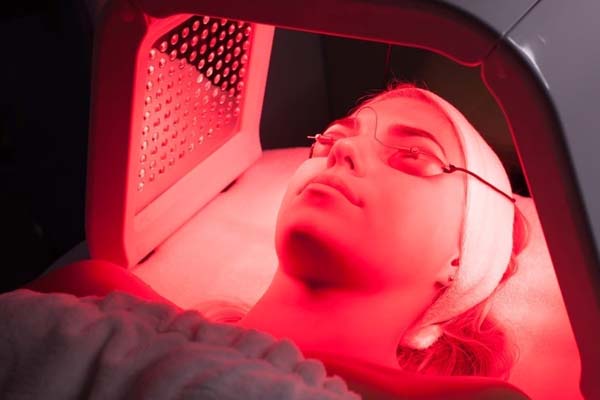
Photobiomodulation: There will always be an innate benefit to the sun versus the LEDs we produce, but LEDs are a great stand-in if we don’t have the time or accessibility to watch the sunrise and sunset.
Circulatory systems are not unique to plants, pulling water from roots to leaves. Circulatory systems are not unique to humans, circulating blood throughout our body. Circulatory systems develop because water is photoelectric. It creates electric and magnetic fields, then creating vortex motion, thus creating a circulation and a generation of force as these electric and magnetic fields rotate. In a sentence, water is photoelectric, therefore living cells are photosynthetic. We urgently need to apply this understanding to our healthcare system. It’s already much too late, but no time is better than today.
Peter, thank you very much. Thank you for introducing us to JustLight, your amazing company. We look forward to having another talk someday. We want to thank everyone who has been reading. We’ll see all on the next episode.
Thank you. It was a pleasure.
Thank you.
Important Links
About Peter Forhan
 Peter is an avid inventor; obsessed with the biological impacts of Light. His investigation into Light began in 2019 after graduating from the University of Michigan with a degree in Materials Engineering.
Peter is an avid inventor; obsessed with the biological impacts of Light. His investigation into Light began in 2019 after graduating from the University of Michigan with a degree in Materials Engineering.
Before the pandemic, Peter invented Halo, an ultraviolet hand sanitizer. At the onset of COVID-19, he quickly scaled the invention into a company. Through a deliberate and recreational review of clinical reviews, Peter stumbled across an old discovery that changed his life. Sunlight is a physiological requirement for human cells and modern humans are Chronically Sunlight Deprived.
Today, Peter is committed to building the vision of Niels Finsen; Phototherapy access in every home. “Nevertheless, I believe implicitly that in the future use will be made of this new therapeutic agent [Light], and the proof experiment once made, it will be easy to carry it out practically under the form of Light Baths; and lastly, to determine whether they are to be blue, violet, or red, the variations in their strength and duration, and whether natural or artificial.” – Finsen, Phototherapy, 1896




